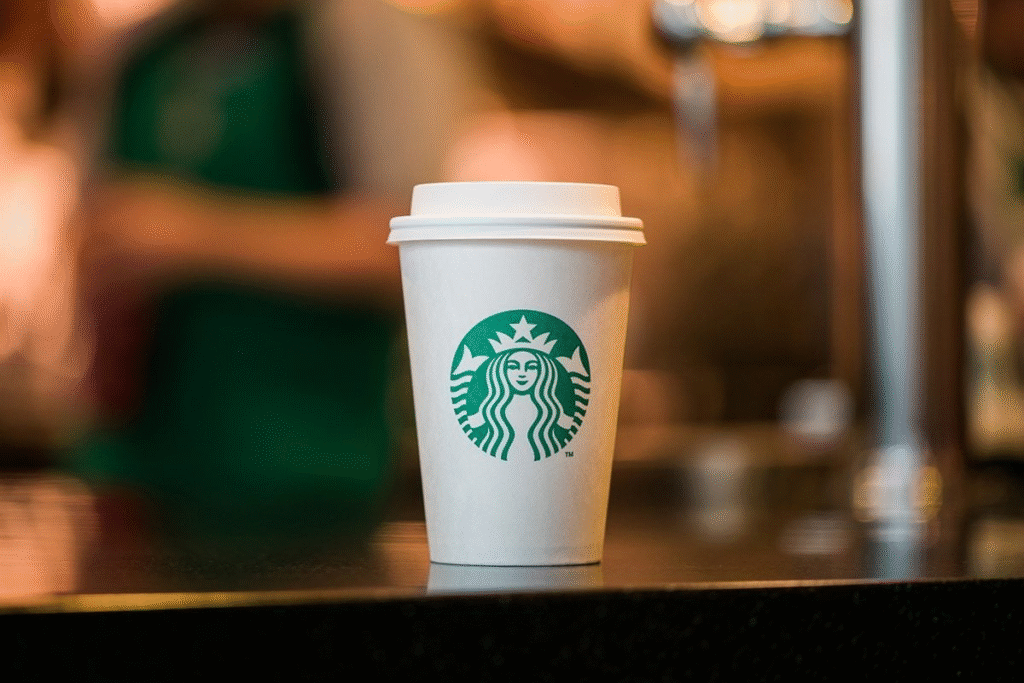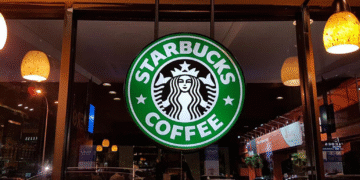When Starbucks first introduced pickup-only stores in 2019, it was hailed as a futuristic move for urban spaces and the hyper-connected consumer. The first of these sleek, minimalist outlets opened in bustling New York, designed purely for speed and efficiency. No seats, no chatty baristas, just mobile orders and quick pickups. At the time, it seemed like the perfect solution for busy city-goers. However, fast forward to 2025, and Starbucks is stepping back from this experiment. Why? In the words of the company’s CEO, Brian Niccol, these stores “lack warmth” and have become “overly transactional.” It turns out that in the race for efficiency, something vital was lost—the human connection that made Starbucks more than just a coffee brand.
What the Numbers Reveal
Behind this strategic pivot lies a financial story that Starbucks couldn’t ignore. In its latest earnings report, the company disclosed that US same-store sales fell by 2% in the three months ending June—marking the sixth straight quarter of decline. Worse yet, net income plummeted by 47% to $558 million, missing Wall Street’s expectations by a wide margin. These sobering figures underline that the company’s pickup-only model did little to reverse its downward trajectory. While mobile ordering accounts for nearly a third of Starbucks’ transactions and remains unaffected, it’s clear that a quick coffee grab without any ambiance or seating failed to sustain customer engagement or loyalty.
A CEO’s Vision for a ‘Warmer’ Starbucks
Brian Niccol, who took the helm as CEO last year, is now leading the charge on what he calls the “Back to Starbucks” initiative. This isn’t just a catchy slogan; it’s a comprehensive plan to bring back the soul of the coffeehouse. Niccol wants to reintroduce cozy seating, improve service speed (with a goal of four-minute delivery times), and rekindle the experience that made Starbucks a cultural icon. In his view, traditional cafes and drive-throughs can deliver the same convenience as pickup-only stores—but with the added bonus of warmth, comfort, and community. This marks a significant shift from the tech-heavy, automation-focused strategy the company had been pursuing until recently.
Lessons from the Frontlines of Retail Innovation
Starbucks isn’t the first company to learn that customer experience can’t be automated away. The pickup-only outlets were efficient but sterile, a place where coffee was handed over without a smile or the smell of freshly brewed beans filling the air. Niccol’s decision to revamp at least 1,000 US cafes by the end of next year is a recognition that in retail, especially food and beverage, emotion matters. The firm is now planning to replace thousands of seats that had been removed and is even revising its dress code to allow baristas more personal expression. The underlying message is clear: customers want more than speed—they want an experience.
Global Impact and Future Strategy
With over 41,000 stores worldwide, Starbucks’ decisions reverberate across the global coffee industry. While the pickup-only phase-out is primarily US-focused, the emphasis on human connection could influence its international operations. From Tokyo to London, cafes may soon see changes that make them more inviting. Moreover, the decision to hire more baristas and scale back automation also hints at a future where people, not just machines, are central to Starbucks’ growth strategy. As the company revamps its menu and store layouts, the goal is clear: reconnect with the community, one handcrafted coffee at a time.

The Market Responds with Optimism
Interestingly, Wall Street seems to approve of Niccol’s new direction. Following the announcement, Starbucks shares surged over 4.5% in extended trading. Investors appear to value the company’s return to its roots, seeing the move as a long-term play to rebuild brand loyalty and customer satisfaction. While short-term earnings have taken a hit, the bet is that the “Back to Starbucks” campaign will yield dividends by restoring the company’s iconic status and drawing customers back into its revamped stores.
A Lesson for the Youth – Don’t Forget the Human Element
For young entrepreneurs and future business leaders, Starbucks’ pivot offers a valuable lesson: technology is a tool, not a replacement for genuine human interaction. In a world rushing towards automation, AI, and hyper-efficiency, it’s tempting to prioritize speed over substance. But as Starbucks discovered, real value often lies in the experience. Whether you’re starting a cafe, launching a startup, or managing a brand, never lose sight of the human touch. People remember how you make them feel, not just how fast you deliver. Innovation should enhance connection, not eliminate it.
Brewing a Better Future
As Starbucks moves forward, the focus will be on delivering quality coffee with a side of comfort and community. The company hopes to strike a balance between convenience and connection, speed and soul. With revamped cafes, more baristas, and a renewed commitment to hospitality, Starbucks is trying to ensure that customers don’t just come in for the coffee—they stay for the experience. In an era where brands are often faceless and transactions impersonal, Starbucks’ decision to go “Back to Starbucks” might just be the kind of bold, human-first move that sets a new standard in retail.
















